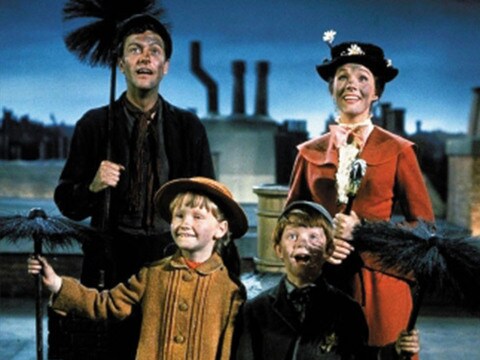
(above is at https://www.youtube.com/watch?v=rpG4n0RkAa0, and is worth watching)
Happy first day of snow, fun-seekers! Just about on time, as we see it, in the week before Thanksgiving. So we’ve got to mulch the last of the leaves, and convert the trusty old John Deere lawn tractor over to snow-blower mode.
Now that you’re updated on our petty personal problems, let’s get straight to the breaking news. You should be well aware that Side has been pursuing answers as to why the east end access doors and tracks of the Brunswick MLF don’t seem to be getting used for their intended purpose. The local newspaper even ran a column of ours on the subject this past Friday.
You’re also up to date on the fact that the Brunswick Town Council will be holding a workshop with NNEPRA and Federal rail officials tomorrow night (Tuesday, 14 November) at the Town Hall at 7:30 pm, where the term “workshop” means members of the public don’t get to speak, unless called upon by the Council Chair.
Heading “west” Downeaster? Looks like some more OPM and a lot of squirming and squishing is necessary before it heads “east”!
In our old dog using old tricks pursuit of this story, we received this preview from an unimpeachable source:
“I have been told by both NNEPRA and Pan Am that switch and track upgrades are required in order to be able to use the east end of the MLF. They have repeatedly said that the work would occur this construction season.”
We’re told the subject will be addressed at the meeting tomorrow night. Which is why we’re suggesting you might want to purchase reserved seats, and make sure you’re all stocked up on pop-corn. We expect some mesmerizing theatrics as elected and appointed town officials, and state and federal bureaucrats, perform a variety of dance rountines, including fancy foot work, the old soft shoe, and the twisting two-step. There might even be some group line-dancing, but we expect Stetsons and leather vests will not be seen in this crowd.

Along with that, we could see lots of nervous throat clearing, finger-pointing duels, mumbling, double-speak, and much inability to recall. This may be the most entertaining council gathering in some years, featuring performers with well-practiced routines, from well beyond our little village’s borders.
Then there’s the old reliable: the meeting is scheduled to run no more than 2 hours, so there “may not be time enough to dig into these complicated issues, and how we might pursue their resolution.”
Our intent here is to make sure you are well prepared for this event.
Just below is the MLF site while under construction, taken from Google Earth, with north up. Notice that east end access area is contrained by a constructed pond, and then the property boundary and properties belonging to others. Note as well that the east end access area to the shed is significantly closer to Bouchard Drive than is the west end access area.

Now a scene snipped from this YouTube video: https://www.youtube.com/watch?v=Ig5xI_R-sDA It looks east, towards the Brunswick Station, from the east end of the building.

As you can see, the ladder tracks and switches are pretty much hemmed in by the pond and the end of the property. This is above our pay grade, but our impression is there isn’t a lot of wiggle room for realigning the tracks and switches. We’re suspicious that the bends and radiuses as they exist create problems for Downeaster movement, and if this is the case, the first solution that comes to mind is stretching things out so the bends and curves are less severe. But there doesn’t seem to be much room for that.
Here’s another Google Earth construction period shot with the east end a bit larger.

Now a shot from the YouTube video previously cited, taken looking west over the building east end:

Now some informative snips from that same YouTube video, in which we’ve captured audio captions for the scenes shown. Closed caption technology is not perfect, so you’ll have to make allowances. You can watch the whole video live….it will only cost you a little more than two minutes. The speaker, in each case, is Jim Russell, the Special Projects Manager for NNEPRA, who was in charge of building design and construction for the state authority. In this first one, he says that the building is “as soundproof as engineering could make it.”

To that, he adds that “we’re having testing here operationally and it’s proving out to be just what was expected.”


This video was posted about a year ago, so it’s pretty fresh, and you’ll want to remember the major quotes, so you can compare them to the live audio you hear tomorrow night at the meeting. Watching the video will also expose you to the bells clanging when the Downeaster moves into the facility. We had not heard them before; we’ve only been exposed to the whistle, and up close it’s pretty overpowering.
Moving onto another track (yuk, yuk!), we want to remind you of this exerpt from a post just a few weeks ago, in which we show a chart from a NNEPRA presentation to our town council in April, 2015.
=========================================================================
Sunday, October 29, 2017

Note that it says “there are NO PLANS to expand Amtrak Downeaster service beyond its Brunswick-Boston route.” Contrast that with this recent video from NNEPRA’s annual Board Meeting, in which the chart shown appears.
https://www.youtube.com/watch?v=T6V_O1jM-fA

Be sure to watch the video before the meeting if you can, because it contains a comment from John Melrose, the Chair of NNEPRA’s Board of Directors, in which he says “this expansion has been in the works for some time” or words to that effect.
Compare those words to the “NO PLANS” words Patsy Quinn uttered to our Councilors two years ago, and you should be well calibrated to set your BS detector sensitivity level for tomorrow night’s meeting.

Please trust us on this; we’re not like all the others. And besides, this isn’t our first trip around the standby generator. And you’ve never seen us in tap shoes, have you?










































